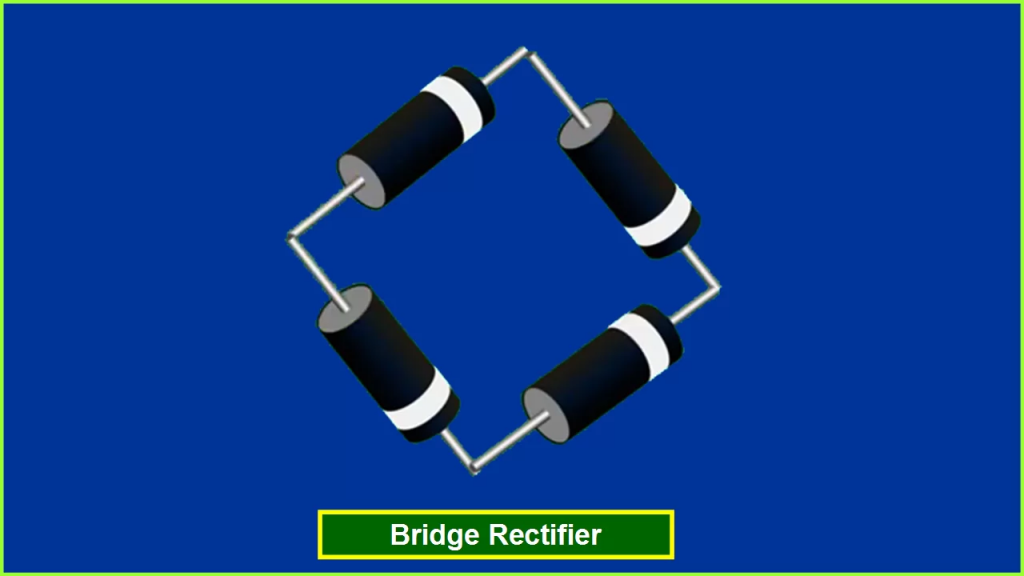When asking what is a full wave rectifier, you’re addressing a key element in modern electronics that acts as the bridge between alternating current (AC) and the direct current (DC) that many devices require. A full bridge rectifier, in particular, is an implementation of a full wave rectifier designed to convert the entirety of an AC waveform into DC.
Introduction to Full Bridge Rectifiers
Understanding what is full wave rectifier technology is essential in grasping the nuances of electrical engineering. It is a configuration that employs four diodes to change an alternating current (AC) into a direct current (DC). This ability to efficiently channel the flow of electricity is critical for the power supply units feeding our electronic devices.
- Definition and Basic Concept A full bridge rectifier exemplifies the full wave rectifier’s capacity to allow current flow in one direction, nullifying the AC’s tendency to reverse direction periodically.
- Significance in Electronics A full bridge rectifier demonstrates the importance of steady DC voltage for modern electronics. Understanding how does a full wave rectifier work is important for anyone involved in circuit design or electrical engineering.

The Working Principle of a Full Bridge Rectifier
The functionality of a full bridge rectifier can be broken down into a series of stages that highlight the full wave vs half wave rectifier differences and advantages.
- The Role of Diodes in Rectification In a full wave bridge rectifier, the diodes play a pivotal role. During each half-cycle of AC, two diodes conduct current and allow the passage of electricity, which is then converted into DC.
- Conversion Process from AC to DC Explaining how does a full wave rectifier work involves examining the pathways that the diodes provide, which ensure continuous flow of current in only one direction, resulting in a pulsating DC output.
Advantages and Practical Applications
| Benefit of Full Bridge Rectifier | Detail |
|---|---|
| High Efficiency | By converting both halves of the AC wave, full bridge rectifiers epitomize the efficiency of full wave vs half wave rectifier configurations. |
| Improved Voltage Conversion | The what is a full wave rectifier question is partly answered by its superior output voltage, making it suitable for a wealth of applications. |
| Versatility | The flexibility of full bridge rectifiers in circuit design further demonstrates the advantages of full wave vs half wave rectifier technology. |
The advantages of using a full bridge rectifier stem from its efficiency and effectiveness, especially when compared to other rectifying methods:
- Efficiency and Voltage Conversion: Full bridge rectifiers, by leveraging the entire AC cycle, arguably present the most significant advantage in the full wave vs half wave rectifier debate. They’re preferred for their efficient energy conversion, as seen in the context of answering what is full wave rectifier and its application in real-world circuitry.
- Applications in Power Supplies: The full bridge rectifier’s functionality is key in most modern power supply designs, which often must answer the question: how does a full wave rectifier work, to ensure reliable and consistent performance in electronic devices.
Comparison with Other Rectifiers
While we’ve touched on the full wave vs half wave rectifier topic briefly, a deeper comparison elucidates why one might be chosen over the other in certain applications.
- Full Bridge vs. Half Bridge A full bridge rectifier is essentially a more advanced version of the half bridge rectifier. In a half bridge, only two diodes are used, and this means that only one half of the AC waveform is used, resulting in a lower output voltage and efficiency compared to a full bridge rectifier.
- The Impact on Output Voltage and Ripple The ripple—fluctuations in voltage output in the DC—is significantly reduced in a full bridge rectifier, thanks to the utilization of both cycles of the AC. This means a smoother DC output, which is essential for the sensitive electronics that require a stable voltage source.

Practical Applications of Full Bridge Rectifiers
The application of full bridge rectifiers spreads across a wide range of electronic products and power systems due to their efficiency and reliability.
- In Everyday Electronic Devices From phone chargers to laptop power adapters, the full bridge rectifier is instrumental in ensuring that your devices are powered safely and effectively.
- Industrial and High-Power Applications In the industrial sector, where machinery requires high power and reliable electricity, full bridge rectifiers are often used to ensure the devices operate correctly without electrical interference.
Troubleshooting and Maintenance
Maintaining full bridge rectifiers is essential for their longevity and proper functioning. Here are a couple of insights into common issues and their solutions:
- Common Issues and Their Resolutions Overheating can sometimes occur with full bridge rectifiers. This commonly arises from an overload condition or insufficient cooling. Ensuring adequate heat dissipation and not exceeding the recommended power loads can mitigate this issue.
- Tips for Ensuring Longevity Regularly checking the integrity of the rectifier’s components, such as the diodes and capacitors, and keeping the devices clean from dirt and dust can greatly extend the rectifier’s life.

Conclusion
In summary, full bridge rectifiers serve as a cornerstone in modern electronics, allowing for the conversion of AC to DC with high efficiency and minimal voltage ripple. Their superiority over half wave rectifiers is evident in their wide-ranging applications, from small gadgets to industrial power systems. As technology marches forward, the full bridge rectifier remains an indispensable component in the power conversion process, evolving alongside advancements in semiconductor technologies.
FAQs After The Conclusion
- What is the main difference between a full bridge and half bridge rectifier? The main difference lies in their configurations; a full bridge rectifier uses four diodes allowing for full wave rectification, meaning both halves of the AC wave are used, while a half bridge rectifier uses only two, resulting in half wave rectification and thus lower efficiency.
- Can a full bridge rectifier convert any type of AC to DC? Yes, full bridge rectifiers can convert any form of AC into DC, but the output characteristics like voltage levels may vary depending on the input AC voltage and the design of the rectifier circuit.
- Why is ripple voltage reduced in a full wave rectifier? Ripple voltage is reduced in a full wave rectifier because the entire AC wave is used, providing a more frequent replenishment of the output, which results in a smoother DC signal compared to a half wave rectifier.
- Do full bridge rectifiers have any disadvantages? While full bridge rectifiers are highly efficient, their complexity increases the number of components required, which can lead to more points of potential failure and a slightly higher cost.
- How do you ensure a full bridge rectifier lasts a long time? Ensuring longevity involves regular electrical and physical inspections, maintaining recommended temperature limits with adequate cooling, avoiding overloading the circuit, and keeping the components clean and dust-free.



